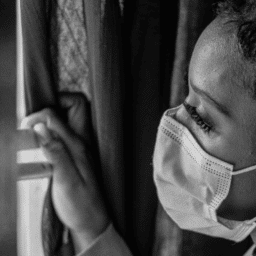That is what missions is looking like today. In the first century the gospel of the kingdom rode the wave of the Roman Empire. It washed out of Jerusalem and into the very house of the Caesar and then out to the very ends of the empire. The empire fell but the church remained undergoing purification and reform. In the last century the gospel rode the wave of colonialism literally to the ends of the earth. The irony is that in these later days as the original land of the faith grows secular, the wave that went out to the ends of the earth is coming back in the form of migration and globalization. The historic Christendom “cast their bread on the water” so to speak and now it is coming back to them in their time of spiritual need. Missions is no longer a one way stream. Rather it is people of faith moving back and forth across the world on the wave of global economics and migration. It has truly begun to be from everywhere to everywhere. The problem is that many of our large mission agencies still function on a model of “the west to the rest”. It is not that we fail to recognize the growing missionary force from other places in the world. It is more that our models of support make it difficult for us to partner with them. Let me give you an example of what I mean. Mission XYZ has a work in the country of ABC. Their team is mostly from North America with a few from Europe and one from a field Mission XYZ was engaged with many years ago. The team has moved to ABC for the long term. They each took on average two years to build a substantial support team that allows them to live at a reasonable level of comfort and security. They have also raised sufficient funds to be able to get together regularly for retreats in conference centers and participate in training events offered by their mission in country and abroad. Recently a very enthusiastic couple from South America joined the team. Mission XYZ was excited to partner with their sending agency and hopes to see this trend continue. The couple brings a welcome dynamic to the team but there is a bit of a problem. Their income is very limited. It has been hard for their sending country to understand just how much it cost to live in country ABC. They get by but it is close and honestly, the other missionaries are a bit embarrassed that they don’t struggle near as much. Also when it comes time to have a conference there is just no way this couple can afford to attend. In the end this constant disparity between income levels and available ministry funds becomes the focus of the partnership.
We have yet to see what will happen. We don’t yet have solutions to this problem, but as we move into a world full of opportunities for the Gospel, this is going to be the challenge before us. What new models of team work and support can we put in place that will make these kind of partnerships workable? What can we do to level the playing field? What changes and sacrifices need to be made? These are some of the questions facing missions today in order for anyone to be able to serve anywhere.










